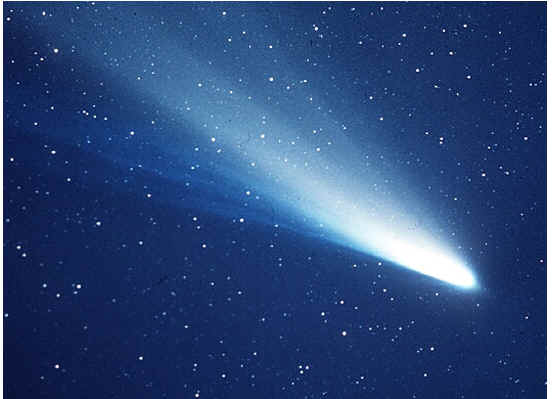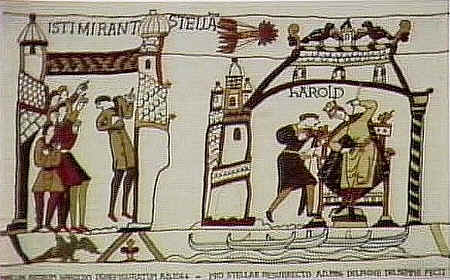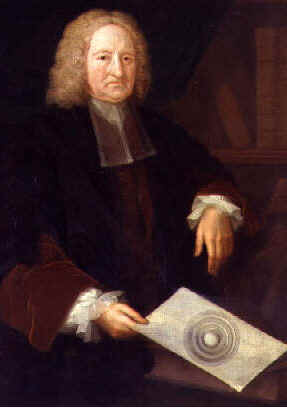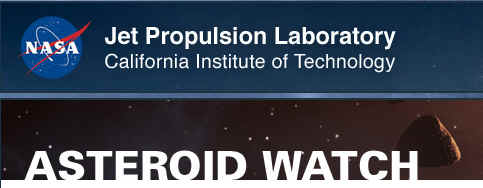
|
||||||||||||
|
|
|
Comets
Comets are sometimes called dirty snowballs or "icy mudballs". Comets were born in the outer reaches of the Solar System, 4600 million years ago, when the planets were forming. Far from the Sun, they formed out of icy material as well as some rocky matter and this turned them into the 'icebergs' of space. Only when a comet swings in towards the Sun does it begin to evaporate and generate the tails for which comets are so famous. When a comet's orbit brings it close to the sun, it heats up and spews dust and gases into a giant glowing head larger than most planets. The dust and gases form a tail that stretches away from the sun for millions of kilometers. Some comets take only a few years to swing around the Sun. Some – like Halley's comet – take much longer. Others appear once and are never seen again.
Unlike the other small bodies in the solar system, comets have been known since antiquity. There are Chinese records of Comet Halley going back to at least 240 BC. The famous Bayeux Tapestry, which commemorates the Norman Conquest of England in 1066, depicts an apparition of Comet Halley. Some people in ancient times thought that a comet was a curse. To save himself from the "curse of the comet," Emperor Nero of Rome had all possible successors to his throne executed.
Edmund Halley of England studied comets and developed a theory suggesting that those sighted in 1531, 1607 and 1682 were actually the same object. He was the first to successfully predict the comet’s next appearance in 1758, but he died 16 years before the comet returned.
When they are near the Sun and active, comets have several distinct parts:
Comets are invisible except when they are near the Sun. Most comets have highly eccentric orbits which take them far beyond the orbit of Pluto; these are seen once and then disappear for millennia. Only the short- and intermediate-period comets (like Comet Halley), stay within the orbit of Pluto for a significant fraction of their orbits. COMET
HALE-BOPP On July 23, 1995, an unusually large and bright comet was seen outside of Jupiter's orbit by Alan Hale of New Mexico and Thomas Bopp of Arizona. Careful analysis of Hubble Space Telescope images suggested that its intense brightness was due to its exceptionally large size. While the nuclei of most comets are about 1.6 to 3.2 km (1 to 2 miles) across, Hale-Bopp's was estimated to be 40 km (25 miles) across. It was visible even through bright city skies, and may have been the most viewed comet in recorded history. Comet Hale-Bopp holds the record for the longest period of naked-eye visibility: an astonishing 19 months. It will not appear again for another 2,400 years. COMET
SWIFT-TUTTLE 1992 This comet was first seen in July 1862 by American astronomers Lewis Swift and Horace Tuttle. As Comet Swift-Tuttle moves closer to the Sun every 120 years, it leaves behind a trail of dust debris that provides the ingredients for a spectacular fireworks display seen in July and August. As Earth passes through the remnants of this dust tail, we can see on a clear night the Perseid meteor shower. Comet Swift-Tuttle is noted as the comet some scientists predicted could one day collide with Earth because the two orbits closely intercept each other. The latest calculations show that it will pass a comfortable 24 million km (15 million miles) from Earth on its next trip to the inner Solar System. COMET
HYAKUTAKE On January 30, 1996, Yuji Hyakutake (pronounced "hyah-koo-tah-kay"), an amateur astronomer from southern Japan, discovered a new comet using a pair of binoculars. In the spring of that year this small bright comet with a nucleus of 1.6 to 3.2 km (1 to 2 miles) made a close flyby of Earth — sporting one of the longest tails ever observed. The Hubble Space Telescope studied the nucleus of this comet in great detail. This is not Comet Hyakutake's first visit to the inner Solar System. Astronomers have calculated its orbit and believe it was here about 8,000 years ago. Its orbit will not bring it near the Sun again for about 14,000 years. COMET
HALLEY Comet Halley is perhaps the most famous comet in history. It was named after British astronomer Edmund Halley, who calculated its orbit. He determined that the comets seen in 1531 and 1607 were the same objects that followed a 76-year orbit. Unfortunately, Halley died in 1742, never living to see his prediction come true when the comet returned on Christmas Eve in 1758. Each time this comet's orbit approaches the Sun, its 15-km (9-mile) nucleus sheds about 6 m (7 yards) of ice and rock into space. This debris forms an orbiting trail that, when falling to Earth, is called the Orionids meteor shower. Comet Halley will return to the inner Solar System in the year 2061.
COMET SHOEMAKER-LEVY 9 Between July 16 and July 22, 1994, more than 20 fragments of Comet Shoemaker-Levy 9 collided with the planet Jupiter. Astronomers Carolyn and Eugene Shoemaker and David Levy discovered the comet in 1993. The Hubble Space Telescope took many spectacular pictures of this event as the comet's pieces crashed into Jupiter's southern hemisphere. It was the first collision of two Solar System bodies ever to be recorded. The impacts created atmospheric plumes many thousands of kilometers high that showed hot "bubbles" of gas with large dark "scars" covering the planet's sky.
The B612 is a non-profit organization founded by a group of astronauts and scientists whose goal is to predict and prevent catastrophic asteroid impacts on Earth. B612 aims to find potentially threatening asteroids, track their trajectories, and to demonstrate the technology to alter the orbit of an asteroid in a controlled manner.
|












